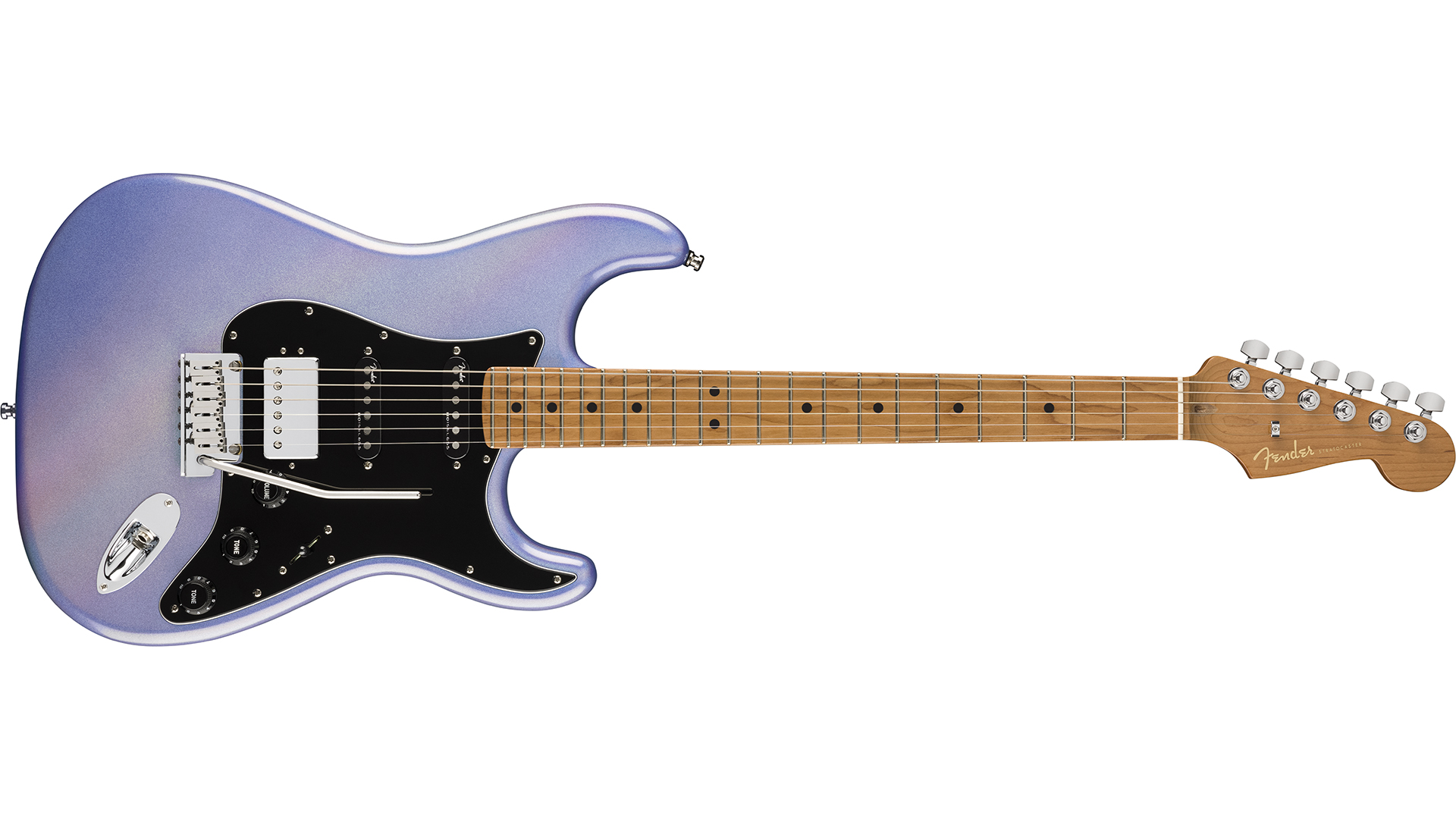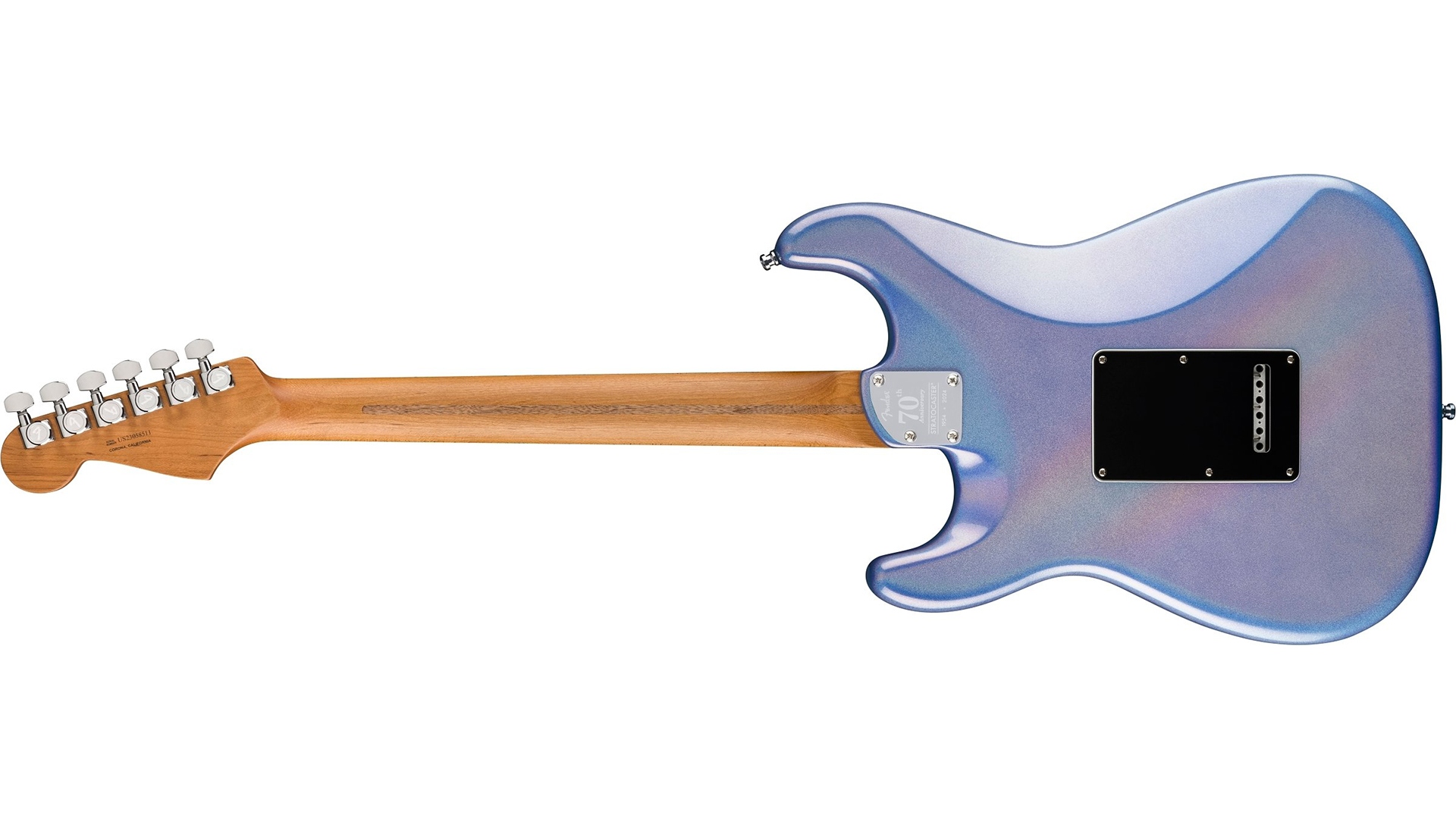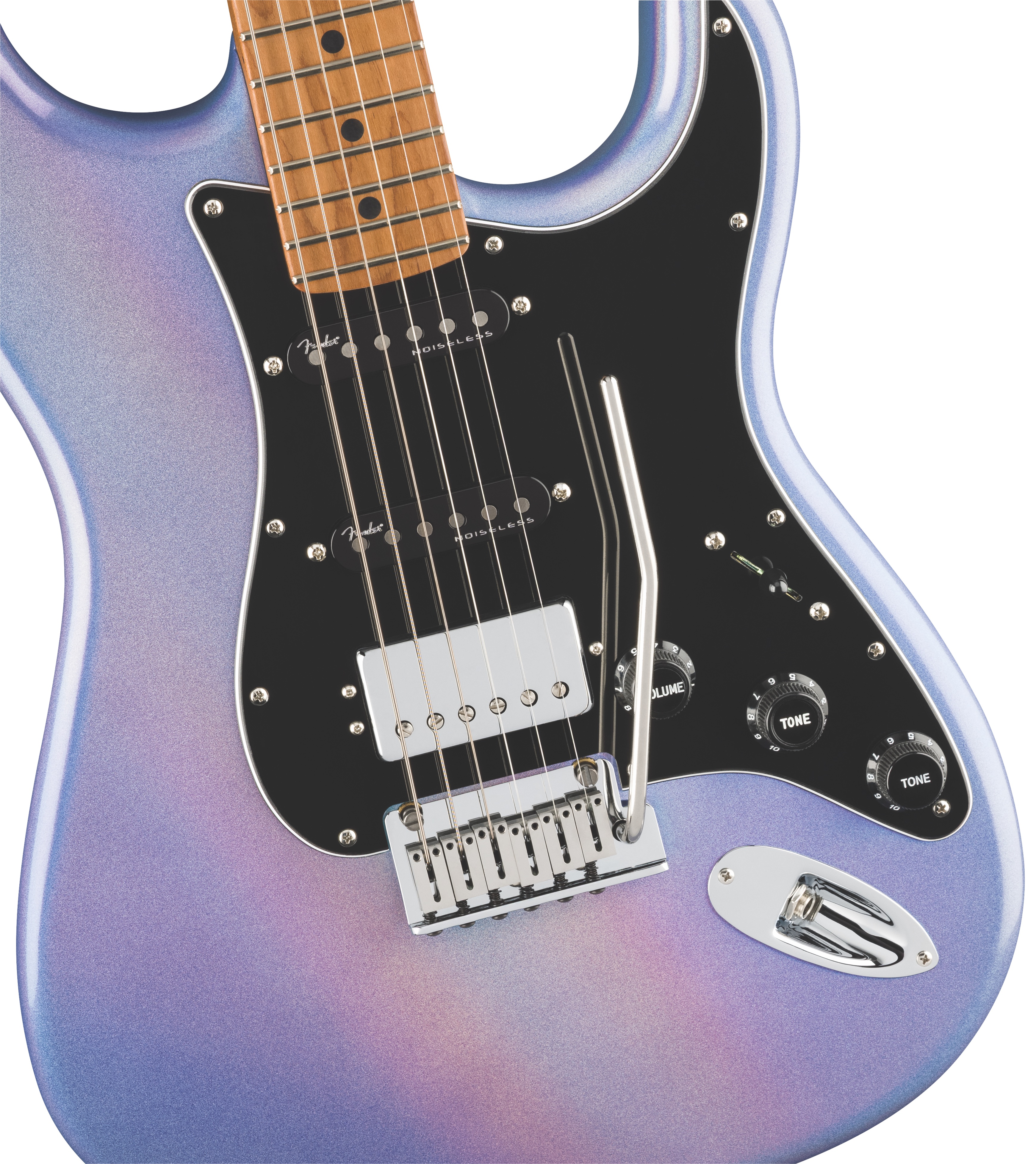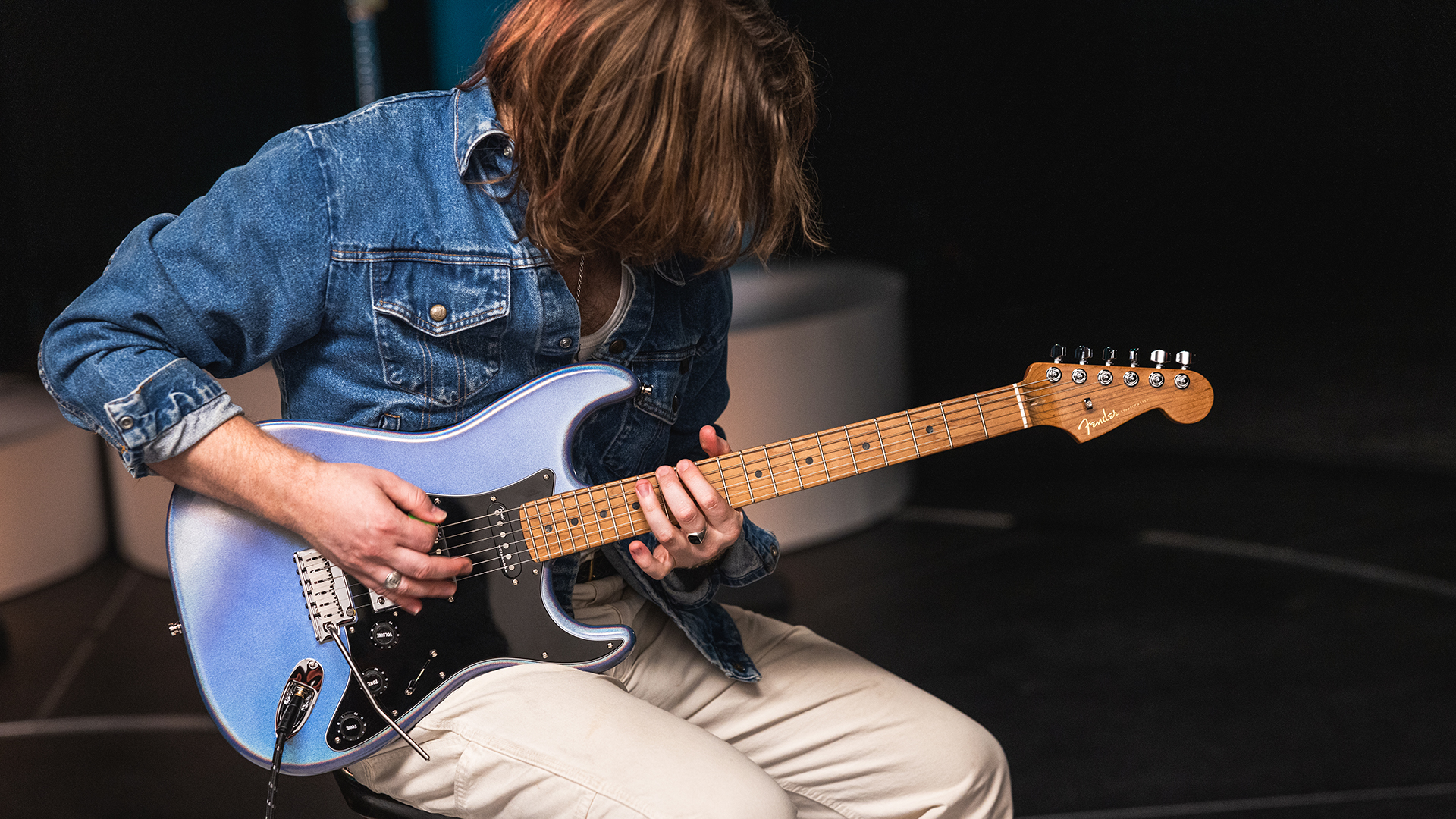GuitarPlayer Verdict
This beautifully-finished salute to the genius of Leo Fender offers a ton of great tones, and presents handy options that become obvious when you dig into the switching choices.
Pros
- +
Stunner of a finish
- +
Sleek and fast fretboard
- +
S-1 switching options
Cons
- -
None
You can trust Guitar Player.
In celebration of the Stratocaster’s debut in the spring of 1954, Fender has launched a series of 70th Anniversary models for 2024 that range from the American Vintage II 1954 Stratocaster in two-color sunburst to the latest Ultra Stratocaster HSS, in an Amethyst finish that pushes the boundaries of automotive technologies.
Fender’s EVP of product design, Justin Norvell, tells us, “We reached out to paint suppliers to see what’s happening in the automotive space, because part of Fender’s history is car colors. We’ve been playing with flip-flop-type colors, like Chrome Glow on the H.E.R model – one of the first of the 3-D, chameleon-like colors we’ve done – and Amethyst, which we’ve been holding for the right guitar. The Ultra turned out to be perfect for it.
“Amethyst looks like a sports-car color and goes with the contemporary vibe this guitar symbolizes. We offer it only in Amethyst because it’s very involved to do and the paint is expensive, but it’s cool to do it in a limited capacity.”
The Ultra Stratocaster HSS on review here is an attention grabber indeed. Its pearly iridescent Amethyst finish radiates blue, orange, and green hues as you view the sculpted alder body in bright light – or practically any light, for that matter. With its enhanced contours, the glossy body presents a lovely contrast to the roasted maple neck, which wears a hand-rubbed oil-urethane finish on the back, and features a hand-filling Modern D profile.
Adding to the complexity of the build – and for reasons that are specifically for player comfort and feel – the fingerboard has rolled edges, is finished in satin nitrocellulose-lacquer, and has a 10- to 14-inch radius and 22 medium-jumbo frets with polished crowns and smoothly beveled ends. In concert with a tapered heel that provides easy access to the high positions, the playability of this guitar sums up as “sleek and fast.”

Strings load through the inertia block of the two-point vibrato, which has chunky steel saddles and a push-in stainless-steel bar, and is adjusted to float, as per the factory setup. The bending feel is silky, and the chrome-plated unit returns to pitch very well, facilitated by a set of sealed locking tuners and a carefully worked bone nut that doesn’t create string-pinging when you abuse the bar.
In the electronics department, the Ultra’s complement of 70th Anniversary pickups consists of a pair of noiseless single-coils in the neck and middle slots, and a new Quadra Tap humbucker in the bridge position. Norvell says that it’s all about evolving a platform that has never stopped evolving.
All the latest guitar news, interviews, lessons, reviews, deals and more, direct to your inbox!
“The Quadra Tap pickup is one of the most intense things we’ve done. When people say ‘tap,’ a lot of times they mean coil-split. A regular humbucker has less winds on it than a single-coil. So in our Double Tap pickup, for example, one of the coils is overwound, but it’s reduced, or tapped, in its humbucker mode. So when you split the coils, it would ‘un-tap’ to be a full single-coil. The Quadra Tap does that, too, but with both of the coils, so now you’ve got more sonic options.”


The five-way blade switch selects the pickups in the standard fashion – the three individually and the neck/middle and middle/bridge combinations. A volume control and dual tone knobs (one for the neck and middle pickups, and one for the humbucker) complete the lineup. However, the Ultra’s range of sounds is enhanced by virtue of the first two controls having push-on/off S-1 switches invisibly embedded into their tops.
These sly switches activate, respectively, a coil-split and a “hot voicing” for the Quadra Tap, which, in the latter, means both coils are now untapped and engaged at their highest output. And it’s all done passively.

Both of these S-1 functions proved useful, as the coil-split brings out the chime and sparkle in the middle/bridge combo, while the hot voicing unchains the bridge pickup to be louder and fatter, which is great in full ’bucker mode for fat, sustaining distortion tones or when running in coil-split for ripping single-coil lead and dirty-rhythm sounds.
The Ultra Stratocaster offers a ton of great tones and presents handy options that become obvious when you dig into the switching choices and see where they lead you on the inspirational curve.
Whether your stylistic tastes lean toward Jimi Hendrix, Eddie Van Halen, or Stevie Ray Vaughan for rock and blues, or you’re into channeling the funky soul of Nile Rodgers or shredding with the atmospheric awesomeness of Eric Johnson, you’ll find the 70th Anniversary Ultra Stratocaster a mesmerizingly cool guitar, as well as a tribute to the genius of Leo Fender for creating an instrument that can be re-imagined to suit players needs.
As Norvell puts it, “It’s not just asking, ‘How do we replicate stuff from the 1950s,’ but rather, ‘How do we continue to evolve a guitar that’s never stopped evolving since 1954?’ The idea with all these limited editions is not just to make a 70th Anniversary Stratocaster that celebrates the past; it’s also about showing where we’re headed for the future.”
Specifications – Fender 70th Anniversary Ultra Stratocaster HSS
CONTACT Fender
PRICE $2,499
NUT Bone, 1.685” wide
NECK Roasted maple bolt-on, Modern D shape
FRETBOARD Maple, 25.5” scale 10”–14” compound radius
FRETS 22 medium jumbo
TUNERS Sealed locking
BODY Alder
BRIDGE Ultra 2-point Tremolo
PICKUPS 70th Anniversary noiseless Ultra Strat single-coils (neck and middle), 70th-anniversary Quadra Tap humbucker (bridge)
CONTROLS Master volume, dual tone controls, five-way switch. S-1 switches on tone knobs for activating coil-split and hot voicing sounds
EXTRAS Nitrocellulose lacquer finish. Black tweed case. Iridescent Amethyst gloss finish
FACTORY STRINGS Fender .010–.046
WEIGHT 8.18 lbs (as tested)
BUILT USA

Art Thompson is Senior Editor of Guitar Player magazine. He has authored stories with numerous guitar greats including B.B. King, Prince and Scotty Moore and interviewed gear innovators such as Paul Reed Smith, Randall Smith and Gary Kramer. He also wrote the first book on vintage effects pedals, Stompbox. Art's busy performance schedule with three stylistically diverse groups provides ample opportunity to test-drive new guitars, amps and effects, many of which are featured in the pages of GP.

